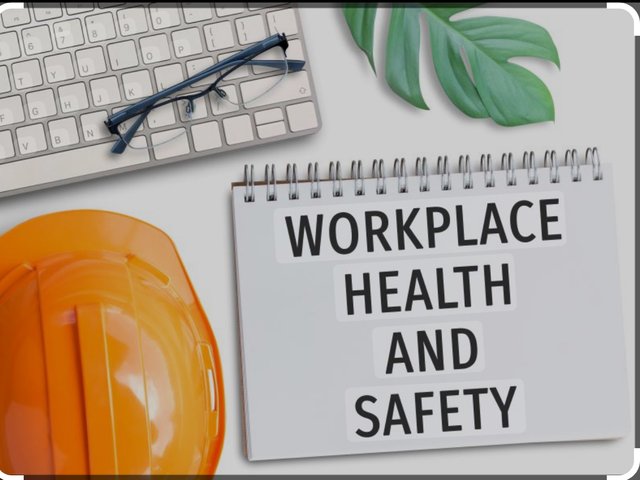EHS Lesson-1
EHS Lesson-122
𝗣𝗘𝗟, 𝗧𝗪𝗔, 𝗧𝗟𝗩, 𝗦𝗧𝗘𝗟, 𝗜𝗗𝗟𝗛, 𝗢𝗘𝗟 𝗮𝗻𝗱 𝗥𝗘𝗟
𝗣𝗘𝗟, 𝗧𝗪𝗔, 𝗧𝗟𝗩, 𝗦𝗧𝗘𝗟, 𝗜𝗗𝗟𝗛, 𝗢𝗘𝗟 𝗮𝗻𝗱 𝗥𝗘𝗟 are all related to occupational health and safety, particularly concerning exposure limits to hazardous substances in the workplace.
- 𝗣𝗘𝗟 (𝗣𝗲𝗿𝗺𝗶𝘀𝘀𝗶𝗯𝗹𝗲 𝗘𝘅𝗽𝗼𝘀𝘂𝗿𝗲 𝗟𝗶𝗺𝗶𝘁):
- This is the maximum amount or concentration of a chemical substance to which workers can be exposed over a specified period (usually 8 hours a day, 5 days a week) without adverse health effects.
PELs are set by regulatory agencies like OSHA (Occupational Safety and Health Administration) in the U.S.
𝟮. 𝗧𝗪𝗔 (𝗧𝗶𝗺𝗲-𝗪𝗲𝗶𝗴𝗵𝘁𝗲𝗱 𝗔𝘃𝗲𝗿𝗮𝗴𝗲):
- The TWA refers to the average concentration of a substance to which a worker can be exposed over a specific period, typically 8 hours (a full workday). It is used to ensure that exposure limits are not exceeded even if exposure is fluctuating throughout the day.
𝟯. 𝗧𝗟𝗩 (𝗧𝗵𝗿𝗲𝘀𝗵𝗼𝗹𝗱 𝗟𝗶𝗺𝗶𝘁 𝗩𝗮𝗹𝘂𝗲):
- This is a guideline established by the American Conference of Governmental and Industrial Hygienists (ACGIH) for the airborne concentration of substances to which workers can be exposed over a specified period, typically an 8-hour workday.
TLVs are not legally enforceable but are widely recognized and used in occupational health.
𝟰. 𝗦𝗧𝗘𝗟 (𝗦𝗵𝗼𝗿𝘁-𝗧𝗲𝗿𝗺 𝗘𝘅𝗽𝗼𝘀𝘂𝗿𝗲 𝗟𝗶𝗺𝗶𝘁):
- The maximum concentration of a substance to which workers can be exposed for a short period (usually 15 minutes), without adverse effects. Typically, STELs are designed to limit short-term, high-level exposures.
𝟱. 𝗜𝗗𝗟𝗛 (𝗜𝗺𝗺𝗲𝗱𝗶𝗮𝘁𝗲𝗹𝘆 𝗗𝗮𝗻𝗴𝗲𝗿𝗼𝘂𝘀 𝘁𝗼 𝗟𝗶𝗳𝗲 𝗼𝗿 𝗛𝗲𝗮𝗹𝘁𝗵):
- This is the concentration of a substance in the air that poses an immediate threat to life or health.
It is used for emergency response situations where quick action is needed.
𝟲. 𝗢𝗘𝗟 (𝗢𝗰𝗰𝘂𝗽𝗮𝘁𝗶𝗼𝗻𝗮𝗹 𝗘𝘅𝗽𝗼𝘀𝘂𝗿𝗲 𝗟𝗶𝗺𝗶𝘁):
- A general term referring to the limit of exposure to hazardous substances in the workplace.
It includes PELs, TLVs, and other standards.
𝟳. 𝗥𝗘𝗟 (𝗥𝗲𝗰𝗼𝗺𝗺𝗲𝗻𝗱𝗲𝗱 𝗘𝘅𝗽𝗼𝘀𝘂𝗿𝗲 𝗟𝗶𝗺𝗶𝘁):
- This is a guideline set by the National Institute for Occupational Safety and Health (NIOSH), recommending exposure limits for hazardous substances.
RELs are similar to TLVs but are set based on NIOSH's scientific research and recommendations.
𝟴. 𝗢𝗦𝗛𝗔'𝘀 "𝗔𝗰𝘁𝗶𝗼𝗻 𝗟𝗲𝘃𝗲𝗹":
- This is a concentration level set by OSHA, usually 50% of the PEL, at which employers must begin specific actions such as monitoring and implementing controls.
𝗖𝗼𝗻𝗰𝗹𝘂𝘀𝗶𝗼𝗻:
These exposure limits are established to protect workers from health risks associated with chemicals and physical agents encountered in the workplace. They ensure that exposures remain within safe levels to prevent both acute and long-term health effects.
